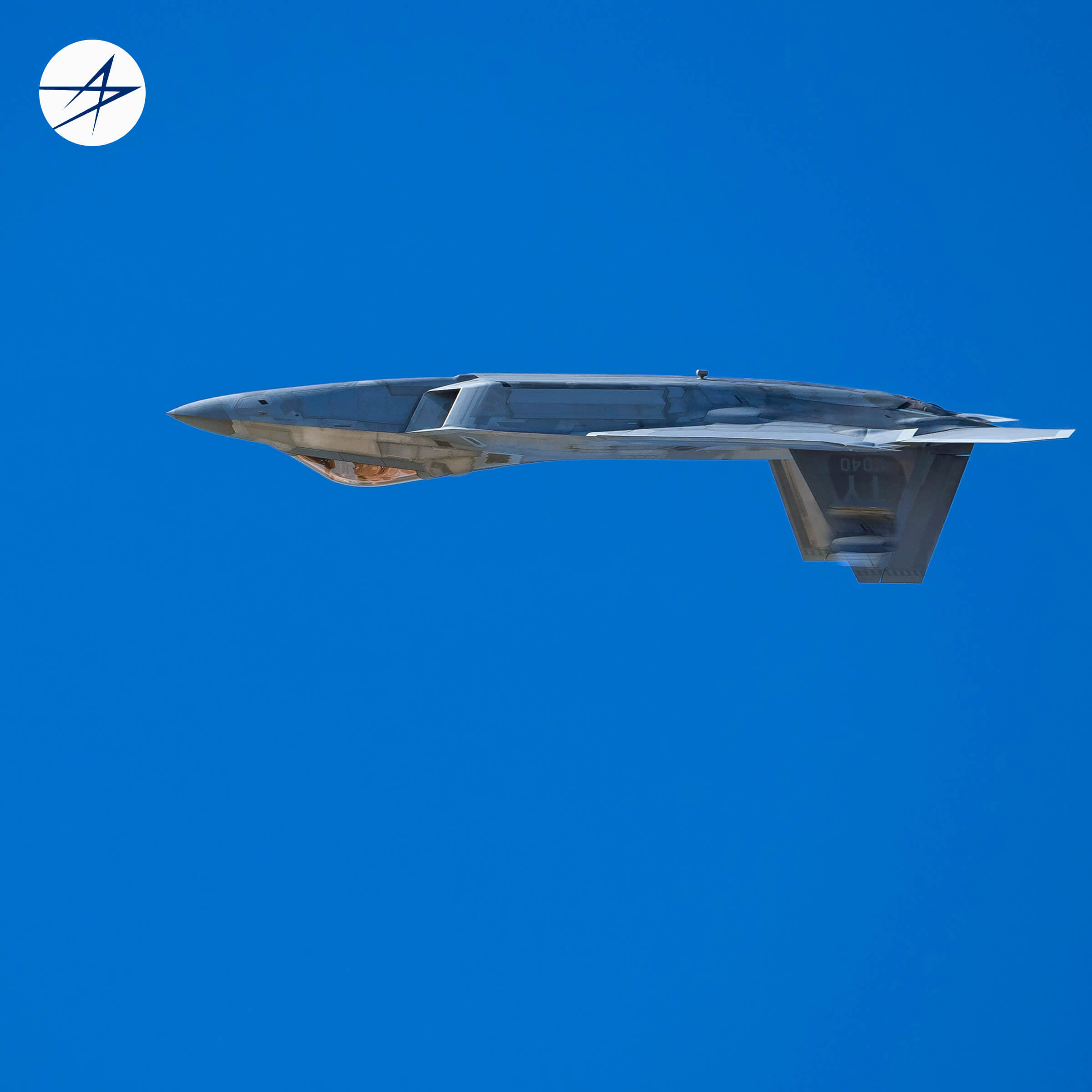On May 18, the US Air Force (USAF) began the classified process of selecting a contractor to develop the Next Generation Air Dominance fighter (NGAD).
The service took a major step by issuing a classified solicitation to the industry, specifically targeting Engineering and Manufacturing Development. The Air Force, in an official statement, expressed its intention to award a contract by the year 2024.
The Next Generation Air Dominance Fighter is the Air Force’s advanced and highly classified aircraft program that will succeed the F-22 Raptor.
The Air Force has acknowledged the need to retire F-22 Raptors by approximately 2030 due to the anticipated advancements in systems developed by China and potentially other global rivals that could surpass its capabilities. The USAF is also perturbed by the obnoxiously high maintenance costs of the Raptor.
Specific details regarding the solicitation for the secretive NGAD program remain classified. However, according to the Air Force’s statement, the solicitation outlines the anticipated specifications and requirements for the aircraft.
The NGAD is envisioned as the world’s first sixth-generation fighter that will serve as the cornerstone of a comprehensive “family of systems.”
This family of systems concept aligns with Air Force Secretary Frank Kendall’s seven operational imperatives, highlighting the significance of the NGAD program in shaping the future of Air Force capabilities.
According to an Air Force spokesperson, the USAF seeks an integrated weapon system through a solicitation process.
However, the spokesperson could not provide further details on the Engineering and Manufacturing Development (EMD) statement because the program is “now in source selection.”
Usually, for a program as significant as NGAD, there is a timeframe of 60-90 days during which potential contractors can seek clarifications about a draft request for proposals.
This is followed by a similar period for responding to the final proposal request (RFP) and then several months for the source selection process.
Therefore, it is likely that the award for NGAD could take place around late 2024. However, NGAD may not adhere to a typical acquisition timeline, as it may have different processes and schedules.
Kendall described the NGAD platform as a vital technological leap over the F-22, highlighting its enhanced lethality and ability to excel in contested environments. In the latest statement, Kendall emphasized the need to move forward promptly to maintain the Air Force’s competitive edge.

Who Will Emerge As The Top Contenders?
The Air Force explained that from an acquisition perspective, the NGAD program strategy aims to stimulate and expand the defense industrial base.
To achieve this, an open architecture approach is being adopted to encourage future competition for upgrades and significantly reduce maintenance and sustainment costs associated with the NGAD system.
The service has classified other technical and programmatic information regarding NGAD to safeguard operational and technological advantages associated with the program.
In previous programs, contractors were often encouraged to minimize initial costs but compensate for narrow profit margins through long-term sustainment revenue. This approach has concerns, particularly regarding maintenance costs.
The anticipated competitors for the NGAD program can be easily inferred. In August of last year, the Air Force awarded contracts to prominent aircraft manufacturers such as Boeing, Lockheed Martin, and Northrop Grumman, along with engine manufacturers Pratt & Whitney and GE Aerospace, for the prototyping phase of the Next Generation Adaptive Propulsion engine program.

In June 2022, Kendall confirmed that the Next Generation Air Dominance program has transitioned into the engineering and manufacturing development (EMD) phase. However, he later clarified that the program still maintained its competitive framework.
Usually, the Air Force does not proceed to the engineering and manufacturing development (EMD) phase without completing a competitive prototyping phase.
However, in September 2020, it was announced that at least one NGAD prototype had already undergone successful flights and achieved notable accomplishments.
The specifics of these records were not disclosed. Additionally, some reports, citing Air Force sources, have indicated that NGAD has advanced beyond the Preliminary Design Review phase with involvement from at least two companies.
The service has not yet clarified whether the solicitation for the NGAD program is exclusively open to companies that participated in the prototyping phase. It is also unclear if the solicitation is open to all interested companies without restrictions.
The exact value of the contract remains uncertain, but during a hearing in April 2022, Kendall informed lawmakers that each NGAD aircraft could cost “multiple” hundreds of millions of dollars. However, he did not provide specific details regarding the potential price tag.
- Contact the author at ashishmichel(at)gmail.com
- Follow EurAsian Times on Google News




